
Ornamental patterns, including a fine Vitruvian scroll (the wave pattern in the middle), over the Fifth Avenue entrance to the Frick Building.
Comments

Ornamental patterns, including a fine Vitruvian scroll (the wave pattern in the middle), over the Fifth Avenue entrance to the Frick Building.
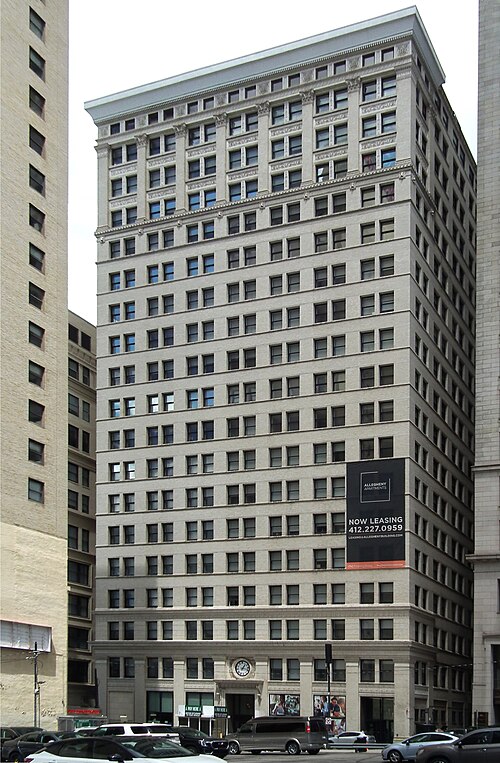
Built in 1906, this skyscraper was designed by Daniel Burnham, architect of the neighboring Frick Building, as the second part of Henry Frick’s architectural tantrum that cut off the light and air from the Carnegie Building. The Carnegie Building was demolished to make way for the nearly windowless Kaufmann’s Annex; this building, which gets plenty of light, is now luxury apartments.
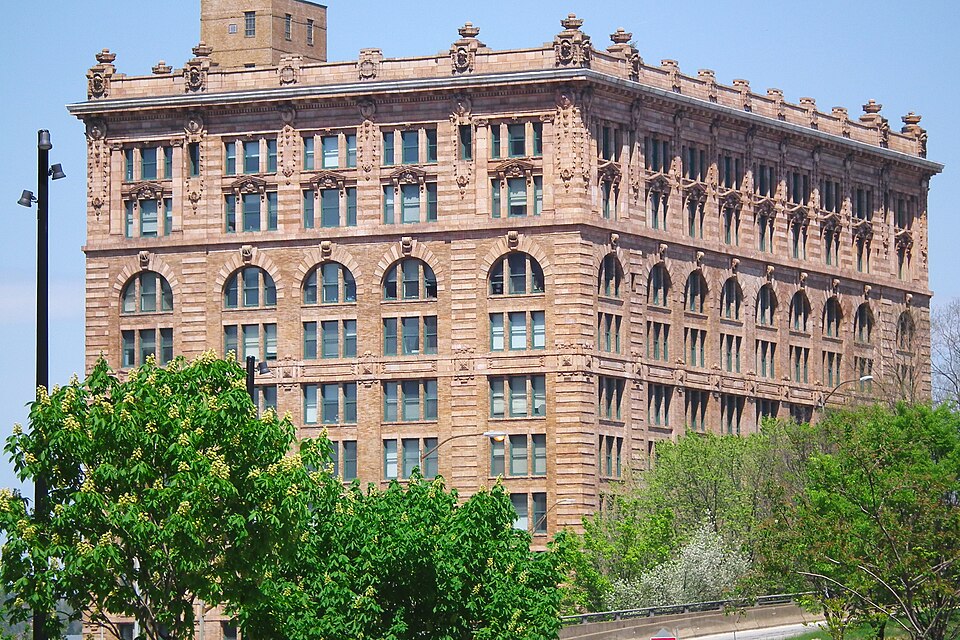
The top of Penn Station seen from the Bigelow Boulevard bridge over the Crosstown Boulevard.
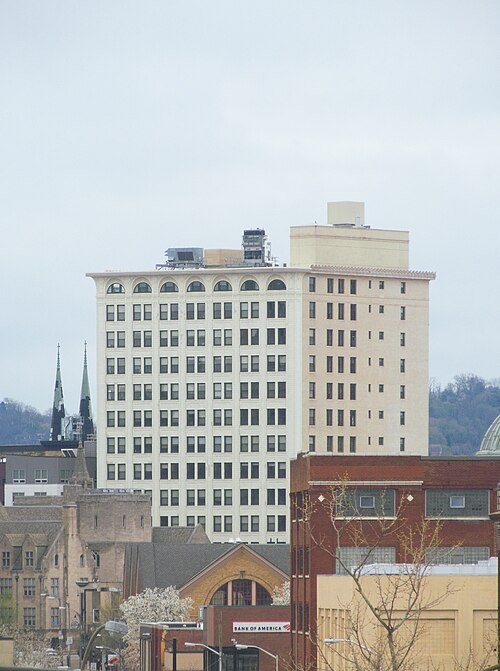
A long view down Baum Boulevard. This is the only remaining skyscraper in East Liberty. Another of about the same dimensions, designed by Frederick Osterling, used to stand next to it, but was torn down for a one-storey bank, which in turn was abandoned for years and then torn down for a six-storey apartment block with storefronts—East Liberty’s history as a neighborhood epitomized in one lot. The skyscraper apartment buildings designed by Tasso Katselas in the “urban renewal” years are also gone. This one, designed by Daniel Burnham, has Burnham’s usual elegant classicism. In some ways Burnham was one of the most adventurous architects the United States ever produced, but part of the secret to his success was his ability to use the most modern technology to please the most conservative taste.

Sometimes the false is truer than the true. It is not possible to get a good picture of One PNC Plaza from the ground. The only way to get in the whole building—well, almost the whole building—was to stitch together multiple pictures, which produced a hideously distorted perspective. To create a rendering that looks more like what we perceive (which is not the same as what we see) when we look at the building, old Pa Pitt resorted to complicated trickery for the picture above, making four vertical slices of the picture and adjusting each one of them separately. If you look at the ground level, you can see how everything else has been broken and distorted to make the building look more like itself.

Here is the base of the building without the radical distortions.
One PNC Plaza was designed by Welton Becket and Associates; it opened in 1972. Mr. Becket died at the beginning of 1969; but it is probable that he left drawings of this building on his drafting table, since it had been planned before 1968. The firm continued under his name long after his death; One Mellon Center, which opened in 1980, was also designed by Welton Becket and Associates.
It is a curious fact that One PNC Plaza replaced another skyscraper that was shorter by only four floors: the First National Bank Building, which was designed by Daniel Burnham and ranks at number 35 on Wikipedia’s “List of tallest voluntarily demolished buildings.” It is the tallest building destroyed in Pittsburgh so far.


Designed by Daniel Burnham, this is the only skyscraper left in East Liberty; another one, designed by Frederick Osterling, was demolished decades ago when the neighborhood’s fortunes were sinking. Now the neighborhood is once again bustling, and the Highland Building, after years of abandonment, is beautifully restored.

A Daniel Burnham masterpiece, fortunately preserved as luxury apartments (you have to go out back by the Dumpsters to catch a train). It was officially Union Station, but usually called Penn Station, since the railroads that were not owned by the Pennsylvania Railroad had their own separate stations.


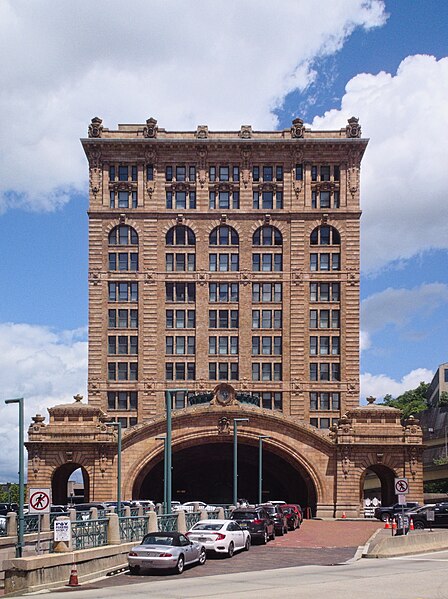


The East Busway runs right past the building on part of the original railroad right-of-way.
We also have some close-up pictures of the terra-cotta decorations on Penn Station.

The rotunda of Penn Station is such a remarkable structure that it has its own separate listing with the Pittsburgh History and Landmarks Foundation. The skylight is a fine example of abstract geometry in metalwork.

The current owners of the Pennsylvanian hate photographers and tourists who come up to see the rotunda, and post signs on the walk up to the rotunda warning that this is private property and no access beyond this point and, with dogged specificity, NO PROM PHOTOS. But old Pa Pitt walked up through the parking lot, taking pictures all the way, and therefore saw the signs only on the way back. Sorry about that, all ye fanatical upholders of the rights of private property, but these pictures have already been donated to Wikimedia Commons, so good luck getting them taken off line.

The four corners of the earth, or at least the four corners of the Pennsylvania Railroad, are represented on the four pillars of the rotunda.

“Pittsburg” was the official spelling, according to the United States Post Office, when the rotunda was built in 1900.

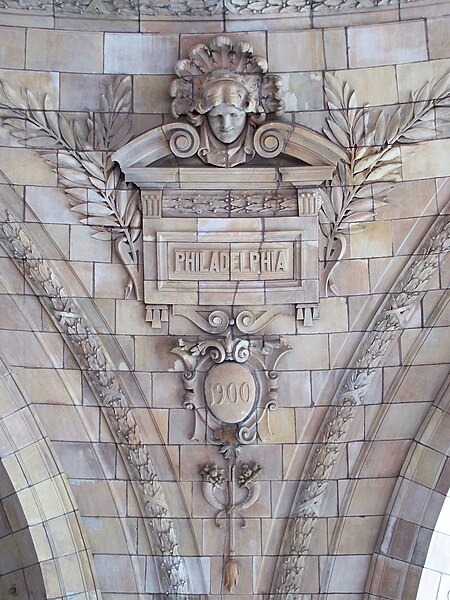
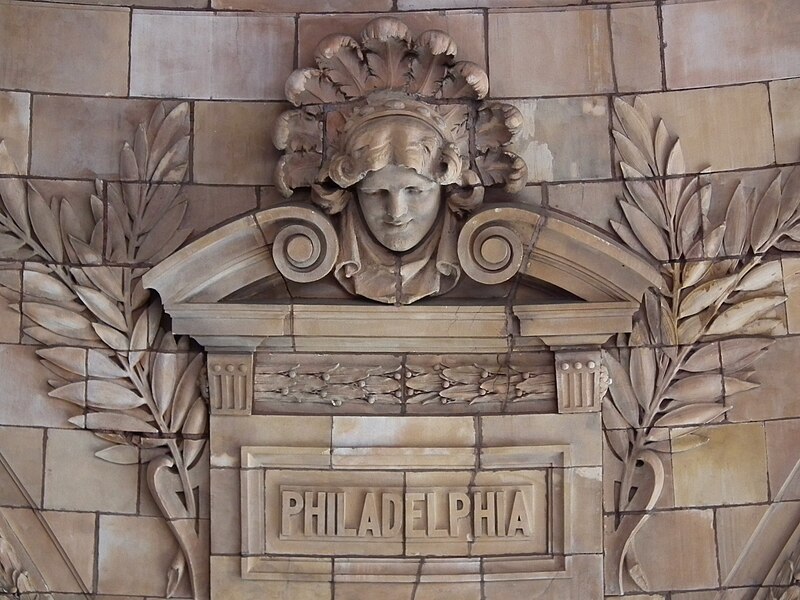
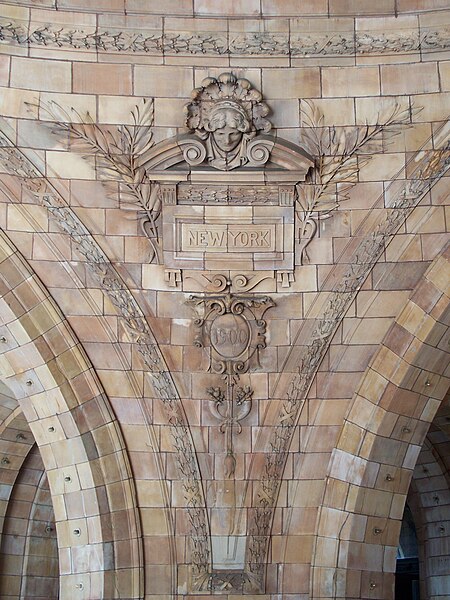
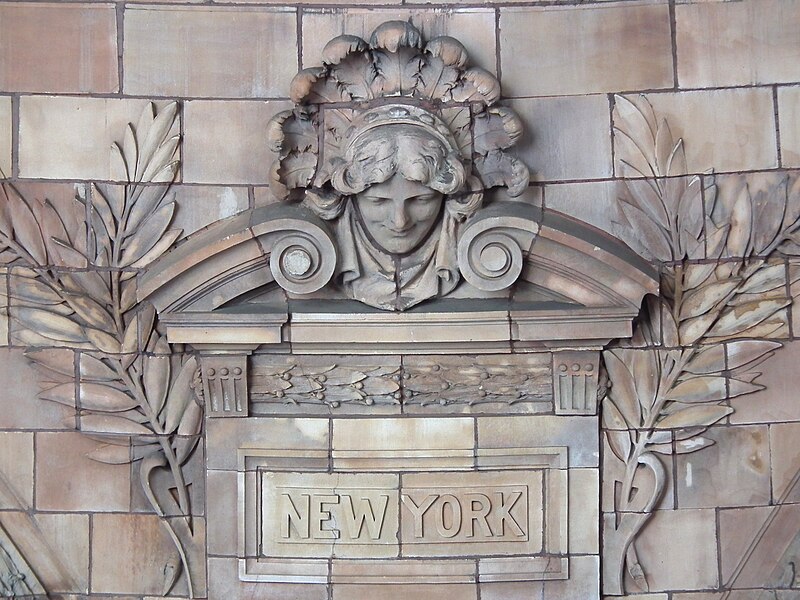



The Oliver Building, designed by Daniel Burnham, was the tallest building in Pittsburgh when it was put up in 1910, passing Alden & Harlow’s Farmer’s Bank Building (destroyed in 1997, or arguably thirty years earlier when it was given a fake-modern skin). Only two years later, though, it was passed by Daniel Burnham’s own First National Bank Building (destroyed in 1968 to make way for a modernist skyscraper barely any taller).
The front of the Oliver Building still produces an impression of absolute massiveness, spanning an entire block with a 348-foot-tall wall. The rear, on the other hand, is where the light wells are, which divide the building into three narrower towers, changing the impression to one of loftiness rather than massiveness.
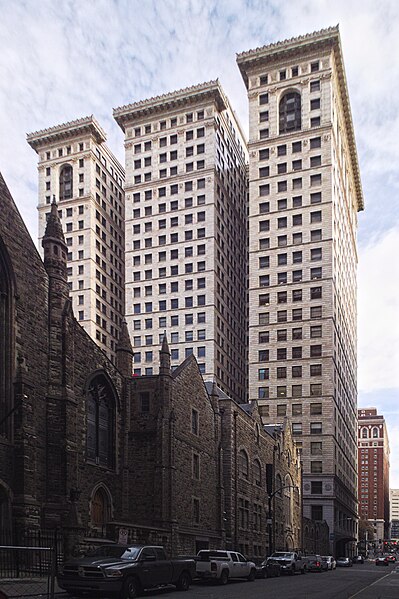
Your eyes are not being fooled by a trick of perspective: the section on the right really does extend a little further toward us than the other two.